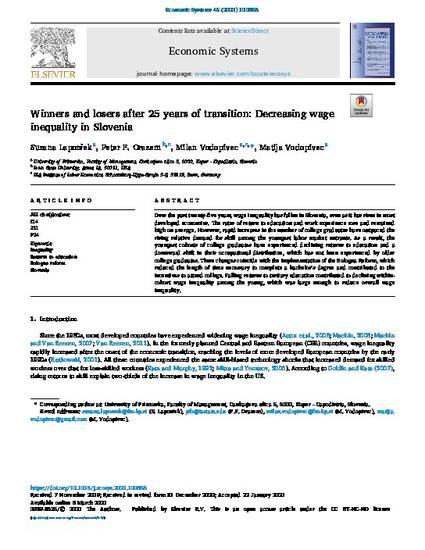
Over the past twenty-five years, wage inequality has fallen in Slovenia, even as it has risen in most developed economies. The rates of return to education and work experience rose and remained high on average. However, rapid increases in the number of college graduates have outpaced the rising relative demand for skill among the youngest labor market entrants. As a result, the youngest cohorts of college graduates have experienced declining returns to education and a downward shift in their occupational distribution, which has not been experienced by older college graduates. These changes coincide with the implementation of the Bologna Reform, which reduced the length of time necessary to complete a bachelor’s degree and contributed to the incentives to attend college. Falling returns to tertiary education contributed to declining within-cohort wage inequality among the young, which was large enough to reduce overall wage inequality.
Available at: http://works.bepress.com/peter-orazem/146/

This article is published as Laporšek, Suzana, Peter F. Orazem, Milan Vodopivec, and Matija Vodopivec. "Winners and losers after 25 years of transition: Decreasing wage inequality in Slovenia." Economic Systems 45 (2021): 100856. doi:10.1016/j.ecosys.2021.100856.